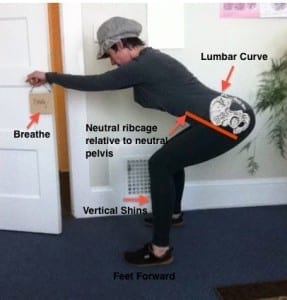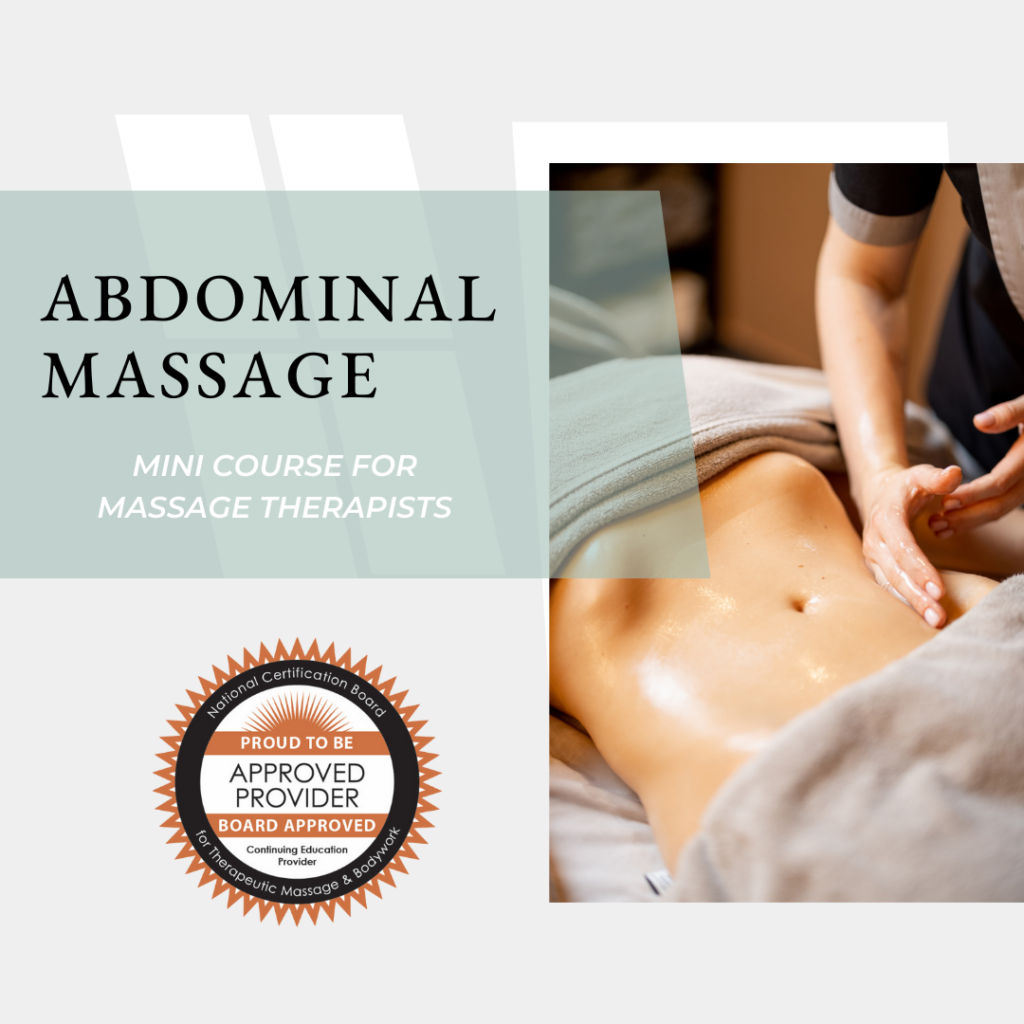Squatting regularly is important for pelvic floor health. How you get in and out of a squat is also important. Ideally, you would maintain a lumbar (low back) curve while getting in and out of a squat. But because we have been sitting in chairs since first grade through high school or college, and then commuting to and from work in a car, sitting in chairs for meals, sitting on a toilet, and then sitting on a couch in the evening, our bodies are no longer able to get into a weight-bearing squat without tucking the pelvis under.
Many of us no longer possess the required joint range of motions for squatting because our tight hips and weak gluteal muscles (butt muscles) won’t allow us to do so. Which brings me to the next point: We need a strong booty to create a posterior pull on the sacrum (the triangle-shaped bone at the base of the spine), in fact, our pelvic floor health depends on it.
A nutated sacrum is when the lower part of the sacrum moves back away from the pubic bone. Kind of like when you nod your head and the top of your head tips forward as the lower part of the head moves back. This is super duper important not only for pelvic floor health, optimal uterine position, proper bathroom mechanics, fetal positioning and spinal health, but also for increasing the diameter of the obstetric conjugate (the shortest pelvic diameter) for the baby to come through during birth.

Test how far you can squat before tucking your tailbone while maintaining these alignment markers.
So what’s a girl or guy to do?
Pelvic floor health requires regular squatting, but you don’t want to jump in and do a full weight bearing, unsupported squat right away, especially since you haven’t done one since the Jimmy Carter administration! There are many components to preparing your body for a full unsupported squat, too many to go into here. It may take months or even years to work into a full squat. In fact, you may never get into one, and that’s okay. All the minor changes you make along the way add up to a lot as far as your overall cellular health is concerned.
So to recap: Chronic hip flexion (chair sitting)=shortened muscles=posterior tilted pelvis=weak glutes=flat butt=weak pelvic floor. Your muscles are shortened because you are telling them to shorten…All. Day. Long. So the number one thing you can do to improve pelvic floor health is to vary your position throughout the day and use your body in a way that eliminates strain on the ligaments and joints.
Here are a few things you can start off with.
- Sit less. It’s not that chairs are evil, it’s how we sit and the frequency that we sit that’s the problem. Your muscles will remember whatever position you held it in the longest. So, get on the floor instead of sitting on the slouch couch. Once you’re on the floor you‘ll start to vary your hip angles and ranges of motion more than you would while sitting in a chair at 90-degree hip and knee flexion. You’ll also use your butt muscles every time you get up and down off the floor or bolster. Use bolsters to prop your hips up if your pelvis tucks under. How high? As high as you need to to keep your lumbar curve. Also, see my floor sitting options HERE.

2. Get a dynamic workstation and go back and forth between standing, squatting on a bolster, or sitting on a chair. For dynamic workstation tips, click HERE. The solution isn’t to replace sitting with another frequently held position like standing in place for eight hours. Again, it’s the quality and frequency of movement that’s important.
3. Kick off your heels! Your pelvis can’t be in neutral relative to your ribcage if you’re wearing positive (elevated) heeled shoes. Even an inch heel will shorten your calf muscles. So, transition slowly to flat shoes to give your muscles time to lengthen. Also, look for shoes with a wide toe box and shoes that are flexible shoes that let your feet be feet. Tight feet can also contribute to pelvic floor problems! Again, transition slowly, don’t run out and go for a ten-mile hike in your new barefoot shoes, your tissues need to adjust in stages. A good starting point is Whole Body Barefoot: Transitioning Well to Minimal Footwear by Katy Bowman, biomechanist.
4. Walk. Walking is a natural movement, but not all walking is created equal either. See the theme here? It’s how you move. Most people fall in a controlled manner while walking rather than walking in alignment. Falling doesn’t require butt muscles, hence the flat butt. The reason why most folks are falling is because they lack the hip range of motion required (because of the tucked pelvis) to extend the leg back fully and push off correctly. When you walk in alignment by pushing off, the gluteal muscles are able to do their job correctly and work as a team with the pelvic floor. Pelvic floor health is a team (whole body) effort. The health of the pelvic floor isn’t isolated to just the pelvic floor muscles! An additional note about walking, it’s also important to vary your walking terrain. Walking on flat concrete is much different than walking on a trail or across a natural field.
5. Alignment Snacks: Hips Don’t Lie, They Sit, Frankie Says Relax, All Fo’ the Pelvic Flo’ and Ball Blast
6. Practice every time you get in and out of a chair. See videos here.
7. Put essentials on the bottom shelf so you can practice squatting and getting out of a squat throughout the day.
8. Transition to floor sleeping.
9. Get a Squatty Potty. The squatting platform on the Squatty Potty allows you to get into a modified supported squat while you’re on the toilet. The platform can be tilted slightly away from you to allow for shortened calf muscles. If you’ve been wearing shoes with positive heels for most of your life (who hasn’t?) this is a really nice feature. You can also attach the platform to slant the other way as your range of motion increases. The Squatty Potty allows your feet to be an ideal distance apart for a squat. When you lean forward with an untucked pelvis (meaning you lean forward from the hips, not the spine, or waist) the top of your femurs will press against your abdomen giving a lift and slight compression to the colon, making bowel movements easier. You can use the Squatty Potty as a stool to raise your feet up while sitting on the toilet or eventually when you have full range of motion in your joints and are strong enough to support yourself in a squat comfortably you can use it as a squatting platform. But, of course, listen to your body, don’t worry about getting into the perfect squat while pooping. You don’t want to increase downward pressure on the pelvic floor by jumping ahead too quickly. Caution: if you have a pelvic organ prolapse, you want to do your correctives first and start with a couple of books under your feet and eventually work into using a Squatty Potty once you can get your feet up without creating excess internal pressure. This rule goes for everyone really, not just people with pelvic organ prolapse.
There’s not a one size fits all squatting stool or platform on the market, but I do feel the Squatty Potty is versatile enough to give you options. The Squatty Potty also comes in two sizes so you can choose one depending on the height of your toilet and how flexible you are. See my video review of the Squatty Potty by clicking HERE.
One of the wonderful things about making these minor changes is that you will be modeling healthy movement patterns to your little ones. Children learn how to move (or not move) by observing their parents and your movement “lessons” will set the foundation for a body that thrives now and later in life.










Thanks so much!
This really helps sum things up in a nice organized and clear fashion.